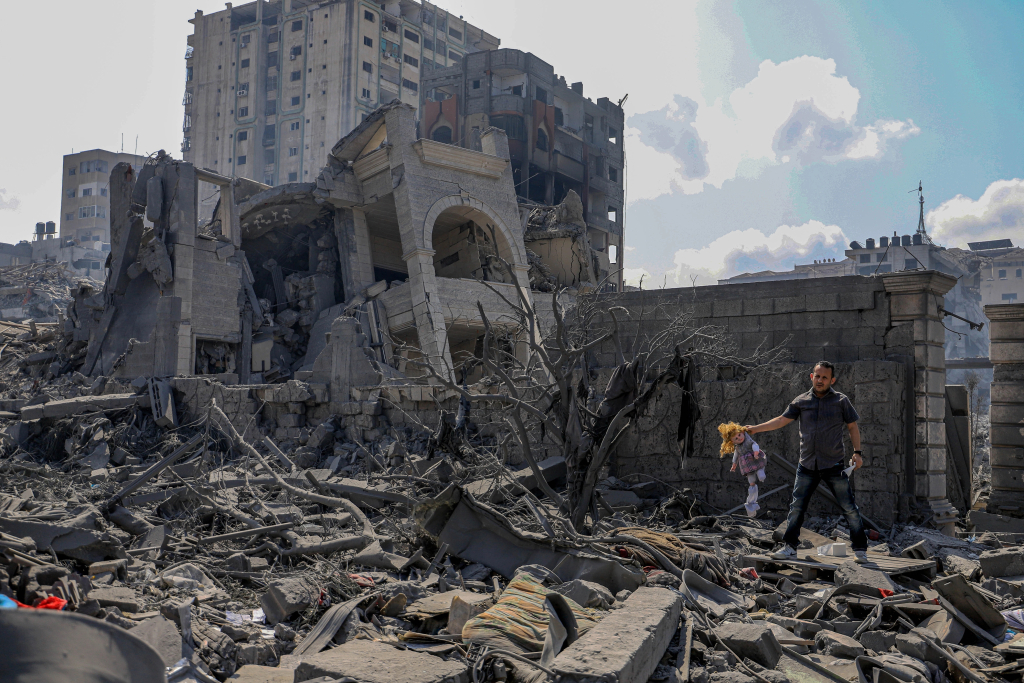
Photo from Deposit Photos
Hamas has agreed to a draft proposal for a ceasefire in the Gaza Strip, along with the release of dozens of hostages, according to two officials involved in the negotiations. The proposal represents a significant step forward in ongoing talks, although final approval will require endorsement by the Israeli Cabinet.
Framework of the Ceasefire Plan
The three-phase plan, based on a framework outlined by U.S. President Joe Biden and endorsed by the United Nations Security Council, focuses on hostages’ release and steps toward de-escalation.
- Phase One: Over six weeks, 33 hostages — including women, children, older adults, and injured civilians — will be released in exchange for hundreds of Palestinian women and children currently imprisoned in Israel. Among the hostages are five female Israeli soldiers, whose release would result in the freedom of 50 Palestinian prisoners each, including 30 militants serving life sentences. Israeli officials estimate most of the 33 hostages remain alive.Israel will maintain control of the Philadelphi corridor along Gaza’s border with Egypt during this phase, despite Hamas initially demanding Israel’s withdrawal.
- Phase Two: The remaining hostages, including male soldiers, will be freed in exchange for additional Palestinian prisoners and a full Israeli military withdrawal from Gaza. Details of this phase are still under negotiation.
- Phase Three: Hostages’ bodies will be returned in exchange for a multi-year reconstruction plan for Gaza, supervised by international entities. During this 42-day phase, Israeli forces will leave population centers, displaced Palestinians can return to northern Gaza, and humanitarian aid will increase significantly, with an estimated 600 trucks entering daily.
Ongoing Challenges
Negotiations remain complex, particularly around guarantees for the ceasefire’s continuation. There are no written assurances that military operations will not resume after the first phase. According to an Israeli official, “detailed negotiations” for subsequent phases will occur during the initial phase. Israel intends to maintain a military presence in Gaza until all hostages are returned.
U.S. Secretary of State Antony Blinken expressed cautious optimism, stating, “A ceasefire is closer than it’s ever been. We could see progress within hours or days.” However, Hamas has insisted it will not release remaining hostages without a complete Israeli withdrawal, while Israeli Prime Minister Benjamin Netanyahu has pledged to continue military operations until Hamas’ capabilities are neutralized.
Humanitarian Impact
The ongoing conflict has inflicted severe human suffering. Gaza health officials report over 40,000 Palestinians killed, with hundreds of thousands displaced into overcrowded camps. The region’s health infrastructure has largely collapsed, and northern Gaza faces a humanitarian catastrophe, including widespread famine.
International advocacy groups continue to call for a ceasefire, describing the situation as a genocide against Palestinians. Meanwhile, protests have erupted worldwide, reflecting growing discontent over the conflict.
U.S. Involvement and Domestic Reactions
President Joe Biden’s administration has faced criticism for its unwavering support of Israel, with protests and counter-protests on U.S. college campuses and within political circles. In April, Congress approved $26 billion in aid to Israel, allocated for humanitarian relief, military operations, and replenishment of defense systems.
As the international community awaits Israel’s response, the proposed ceasefire marks a potential turning point in the conflict, contingent on delicate and complex negotiations ahead.




